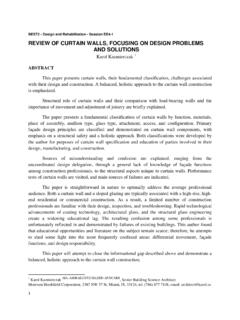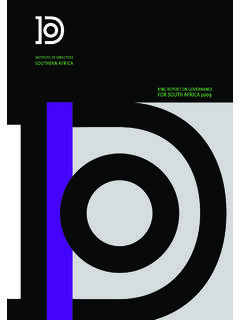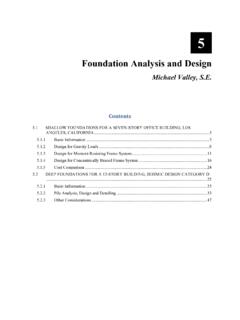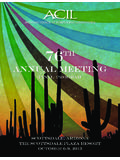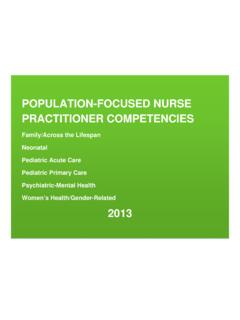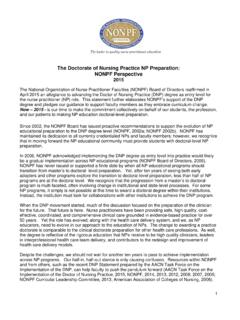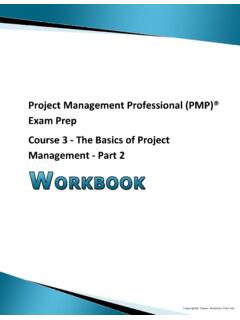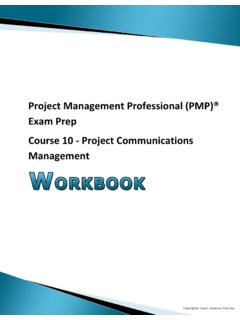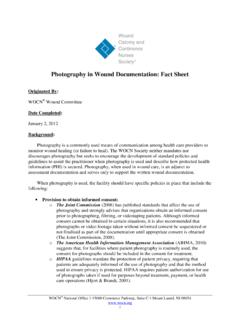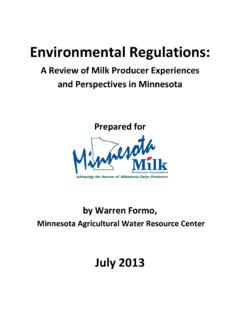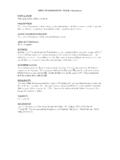Transcription of Geriatric Balance Assessment, Falls Prevention, and ...
1 11/6/2013. Geriatric Balance assessment , Falls Prevention, and Community Wellness Jordan Bjorhus, PT, DPT, Fall proof certified Course Description Explore the topic of Falls among older adults: risk factors and prevention of Falls , patient specific outcome measures, and associated health care costs. Learn how to select and implement appropriate Balance assessment tools based on patient function and practice setting, and identify Falls risk stratification. Learn how to implement an evidence-based Balance and mobility training programs for older adults at moderate to high risk for Falls in community & residential care settings. Learning Objectives Understand the impact that Falls among older adults have on the health care system. Identify risk factors for Falls and fall associated injuries.
2 Identify evidence based Falls assessment measures Identify the importance of a physical therapists role in community wellness and how to implement Balance and Falls training in your local community This information is the property of Jordan Bjorhus, DPT, and should not be copied or otherwise used without expressed written permission of the author 1. 11/6/2013. FALL is an unexpected event in which the person comes to rest on the ground, floor or lower level Falls usually are the result of interactions between multiple intrinsic and extrinsic risk factors. Falls statistics More than 1/3 of people over the age of 65 years experience one or more Falls each year 1. of fallers are recurrent fallers 2. Individuals who have fallen have a 3x increased risk of falling again 3.
3 More than of people living in institutions fall each year3. Approximately 1 in 10 Falls results in a serious injury, such as hip fracture, other fracture, subdural hematoma, other serious soft tissue injury, or head injury. 4,5. Falls statistics 20-30% of fallers whom sustain a hip fracture die within 1 year of fracture6. Falls account for approximately 10 percent of visits to the ED among elderly persons7. Forty percent of hospital admissions among people over the age of 65 years are reported to be the result of fall-related injuries8. This information is the property of Jordan Bjorhus, DPT, and should not be copied or otherwise used without expressed written permission of the author 2. 11/6/2013. Falls statistics Falls in the elderly cost the US health system $ bn in 2010 9.
4 The cost of a fall related injury was more than more than implementing a Falls prevention program 10. 40-73% of fallers report a fear of falling 11. Can lead to further decline in mobility and Balance secondary to activity limitation Complications from Falls Musculoskeletal injuries hip/wrist fracture Muscle strain TBI. Loss of independence Pneumonia Pressure sores Rubenstein, 2006. This information is the property of Jordan Bjorhus, DPT, and should not be copied or otherwise used without expressed written permission of the author 3. 11/6/2013. Risk Factors Risk factors are multi-factorial Interaction of the biological, behavioral and environmental risk factors impairment in Balance , gait, or muscle strength, previous Falls , among many others; and the use of four or more prescription medications 13.
5 The likelihood of falling increases exponentially as the #. of risk factors increases risk factor identification is a promising first step in developing effective fall-prevention programs Rubenstein, 2006. Age associated changes in sensory systems Somatosensory Loss of plantar sensation due to diabetes or peripheral neuropathy Vision Decreased visual acuity, depth perception and peripheral vision Vestibular: Loss of the receptor hair cells This information is the property of Jordan Bjorhus, DPT, and should not be copied or otherwise used without expressed written permission of the author 4. 11/6/2013. Falls assessment It is important to assess a person's Balance and mobility in order to: Identify specific nature of Balance and mobility problems Establish an appropriate starting point Individualize and progress exercises based on client needs Falls Assessments Berg Balance assessment Measures multiple dimensions of Balance in a medium/low functioning population Commonly used for community programs Static and dynamic Balance 16 items, 4pts each <47 = Falls risk Ceiling effect for higher functioning individuals Berg, 1992.
6 Falls Assessments Fullerton Advanced Balance Scale (FAB ). measures multiple dimensions of Balance in a high functioning population Static and dynamic Balance ; somato-sensory, vision, and vestibular functions Commonly used for community programs 10 items, 4pts each <25= increased risk for Falls Hernandez, 2008. This information is the property of Jordan Bjorhus, DPT, and should not be copied or otherwise used without expressed written permission of the author 5. 11/6/2013. Falls Assessments BESTest and mini-BESTest differentiates Balance into 6 underlying systems: Biomechanical, Stability Limits, Postural Responses, Anticipatory Postural Adjustments, Sensory Orientation, and Dynamic Balance during Gait and Cognitive Effects BESTest=36 items; Mini-BESTest=14 items; 2 pts each Norms have not yet been established Horak, 2009.
7 Falls Assessments Mini BESTest items: Sit<>stand, rise to toes, SLS, compensatory step correction in forward, back, and lateral directions, narrow stance with EO on firm, eyes closed on foam, incline eyes closed, change in gait speed, walk with horizontal head turns, pivot turns, step over obstacles, TUG with dual task. Falls Assessments Tinetti POMA. Balance and gait assessment for older/frail Max score of 12 for gait component,16 for Balance (28 total). <19=high Falls risk; <24=medium Falls risk Ceiling effect Greatly effected by AD use Limited dimensions of Balance assessed Tinetti, 1986. This information is the property of Jordan Bjorhus, DPT, and should not be copied or otherwise used without expressed written permission of the author 6. 11/6/2013.
8 Falls Assessments Dynamic Gait Index (DGI). Gait and Balance assessment with vestibular component 8 items, 3pts each <20/24= increased Falls risk <12/24=high Falls risk Shumway-Cook 1997. Falls Assessments Functional Gait assessment (FGA). Assesses postural stability during various walking tasks; 10 items Altered DGI to limit ceiling effect 7 items from the DGI. 3 additional/more difficult items gait with narrow base of support, ambulating backwards, and gait with eyes closed <22/30 predicts Falls in community-dwelling older adults 19. Falls Assessments Modified Clinical Test of Sensory Interaction in Balance (M-CTSIB): Evaluates if sensory input (vision, vestibular, somato- sensory) is normal or abnormal 4 conditions firm surface with EO(somato and vision).
9 Firm surface with EC(somato). Foam surface with EO(vision). Foam surface EC(vestibular). Max score of 120 (30 each condition). This information is the property of Jordan Bjorhus, DPT, and should not be copied or otherwise used without expressed written permission of the author 7. 11/6/2013. Falls Assessments 5x sit<>stand Assesses LE strength and power Leg strength is predictive of fall risk12. >15 seconds = Falls risk 20. No hands for push off Alternative is 30 chair stand test Falls Assessments Timed up and Go (TUG). Great initial screening tool; assesses general functional mobility Preferred speed, can use an AD. >14 seconds indicates higher fall risk 21. 8 Foot Up and Go performed at max speed, and no AD used > seconds indicates higher fall risk22. Falls Assessments Functional reach test Assesses dynamic weight shifting <10 =2x more likely to fall <6 =4x more likely to fall23.
10 Lateral Reach test >8 is normal Seated functional reach Norm for males 60-79 yo= . Norm for females 60-79 yp= . This information is the property of Jordan Bjorhus, DPT, and should not be copied or otherwise used without expressed written permission of the author 8. 11/6/2013. Falls Assessments Static Balance assessments One leg Balance test <5 = increased risk for injurious fall Romberg Assesses equilibrium/proprioception and static Balance 1. Feet together with eyes open; 2. Feet together with eyes closed, 1 minute each Tandem Romberg <10 predicts increased Falls risk 24. Falls Assessments 4 square step test Timed test assessing multi-directional stepping >15 identifies multiple fallers 25. 2 3. 1 4. Falls Assessments Alternate Step test Assesses dynamic Balance and COG control 130% increased Falls risk if 8 steps>10 24.
